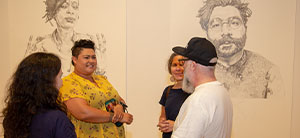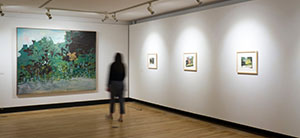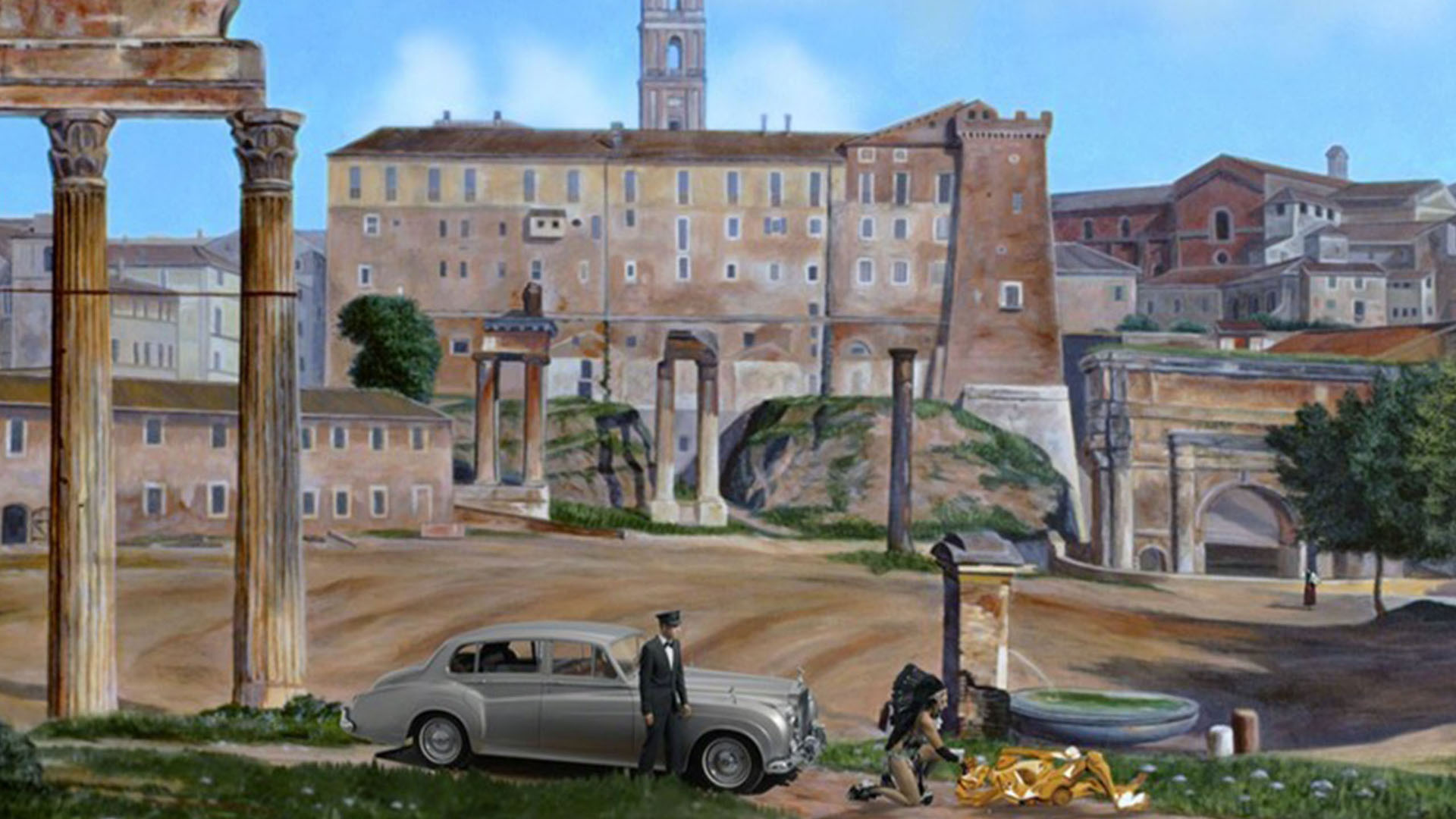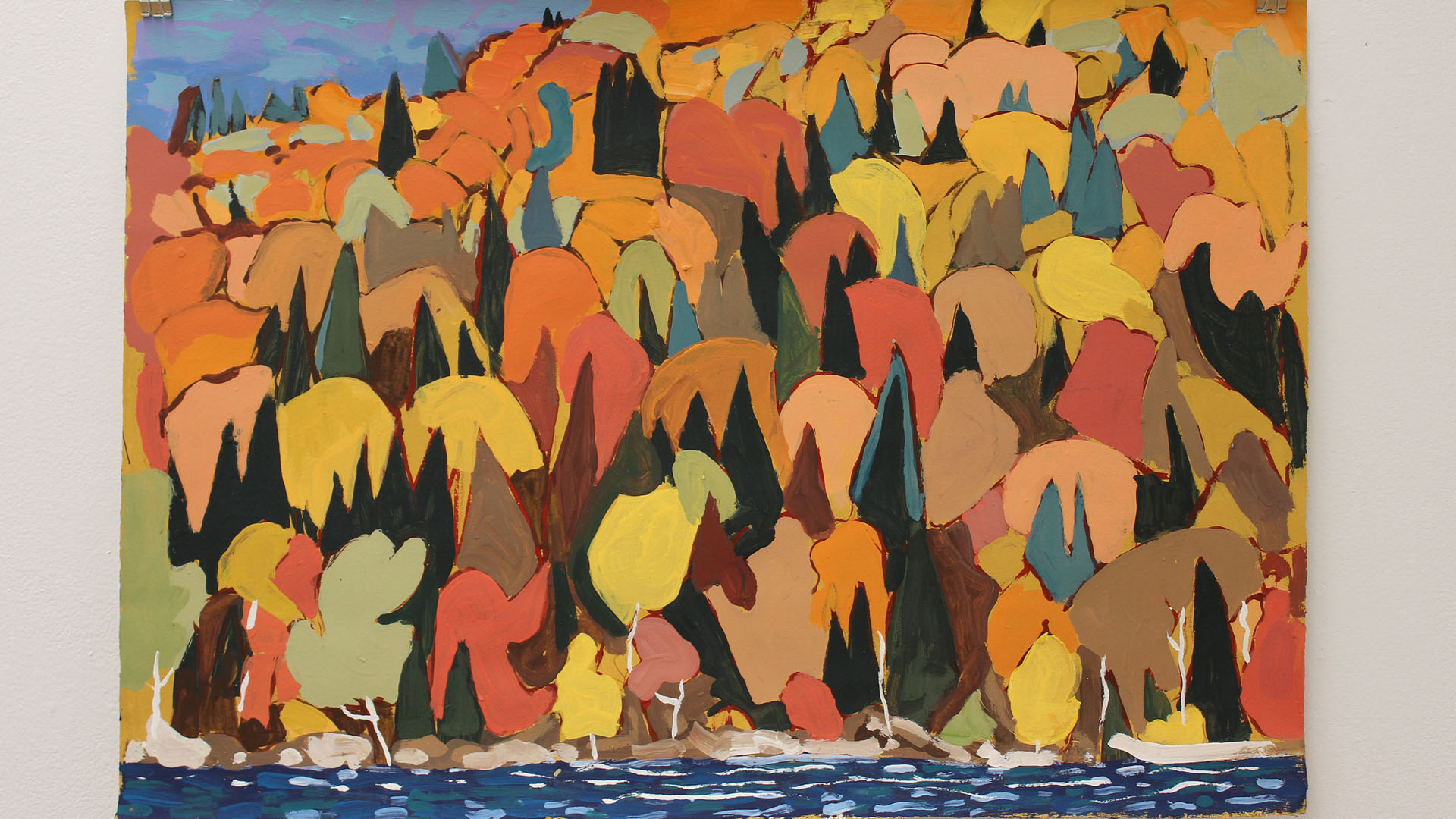
The Drive
Shauna McCabe and Brian Meehan
Anchored by the Art Gallery of Guelph’s major Tom Thomson canvas of the same title, the exhibition The Drive situates the work of Thomson, the Group of Seven, and their peers in relation to diverse Indigenous and Canadian artists in order to highlight the complexity of the representation of landscape – particularly as it relates to the land and the history of resource development.
Thomson’s The Drive (1916-17) is considered to be among the artist’s most significant paintings, featuring the logging industry in Algonquin Park, a common subject for the artist and one often overshadowed by his paintings of seemingly untouched landscapes such as The Jack Pine (1916) and The West Wind (1917). Based on a sketch produced in the summer of 1916 when Thomson was employed as a fire ranger in the park, the canvas depicts a massive flow of timber emerging from a dam at Grand Lake near Achray in Canada’s oldest provincial park. Figures atop the dam guide logs through a narrow gap in the structure, carrying the harvest towards the Ottawa River. Logging dams were a favourite fishing site for Thomson as seen in the renowned photograph of the artist fishing at the foot of Tea Lake Dam taken by Lawren Harris in 1914.
The painting captures the intensity of logging in a park that had already been widely clear cut in Thomson’s day. The industry was the primary shaper of the landscape Thomson painted and made famous, defining this landscape as postindustrial, not the untouched wilderness it is so often described as. The work also offers the lens through which other works of art such as Algoma and Lake Superior paintings by Lawren Harris, A.Y. Jackson’s depictions of mining settlements, and agricultural scenes and views made accessible by rail by J.E.H. MacDonald, are considered and contextualized within the exhibition. Complemented by the work of Indigenous and Canadian artists including Sonny Assu, Christi Belcourt and Isaac Murdoch, Bob Boyer, Edward Burtynsky, Bonnie Devine, Robert Houle, Isuma, Sarah Anne Johnson, Daphne Odjig, Kelly Richardson, Don Russell, Frank Shebageget, Peter von Tiesenhausen, and Lawrence Paul Yuxweluptun, the exhibition documents the effects of colonization and changing relationships to the land through creative interventions that advance ecological sustainability and environmental justice.
Image detail: Tom Thomson, The Drive, 1916–17, oil on canvas, 120 x 137.5 cm. Purchased by the Ontario Agricultural College with funds raised by students, faculty and staff, 1926, University of Guelph Collection at the Art Gallery of Guelph



Organized by the Art Gallery of Guelph with the support of the Department of Canadian Heritage, Canada Council for the Arts, and Ontario Arts Council.
Gallery
Artists
Sonny Assu
Christi Belcourt and Isaac Murdoch
Bob Boyer
Edward Burtynsky
A. J. Casson
Bonnie Devine
Lawren Harris
Robert Houle
Isuma
A. Y. Jackson
Sarah Anne Johnson
Arthur Lismer
J. E. H. MacDonald
Daphne Odjig
Kelly Richardson
Don Russell
Frank Shebageget
Tom Thomson
Peter von Tiesenhausen
Lawrence Paul Yuxweluptun
View More Exhibitions

exhibition
September 18.2025 / January 4.2026
Explore vibrant landscapes from the AGG’s permanent collection that use colour not only as a formal strategy, but as a way of relating to Nonhuman life, Land, Water, one another, and to the self.

exhibition
September 18.2025 / January 4.2026
Through practices that span net art, interactive sculpture, installation, video, and textile, Soft Internet Theory invites audiences to consider a gentler, more human digital future.

exhibition
September 18.2025 / January 4.2026
Challenging colonial conceptions of how Land and Water are used, valued, and protected, Reworldings speaks to living relationships with place and peoples, to the interdependence of species and systems, and to the urgent need to restore not only ecosystems, but justice.

exhibition
September 18.2025 / January 4.2026
Explore how artists reimagine landscapes shaped by industry and urbanization, challenging our ideas of nature, beauty, and human impact on the environment.

exhibition
May 22.2025 / August 29.2025
Fuzzy Thinking explores how textiles’ softness and tactility challenge boundaries between art and craft, weaving together historical and contemporary works rooted in material and cultural complexity.

exhibition
May 22.2025 / August 29.2025
Curated through an open call, artists from across Guelph were invited to share their work in a collective reflection of the city’s creative landscape.

exhibition
May 3.2025 / May 8.2025

exhibition
April 24.2025 / April 29.2025
Through photography, Bahar Enshaeian unravels the intricate layers of memory, identity, and belonging. Rooted in personal experience, her work speaks to the complexities of migration, displacement, and the search for home.



































